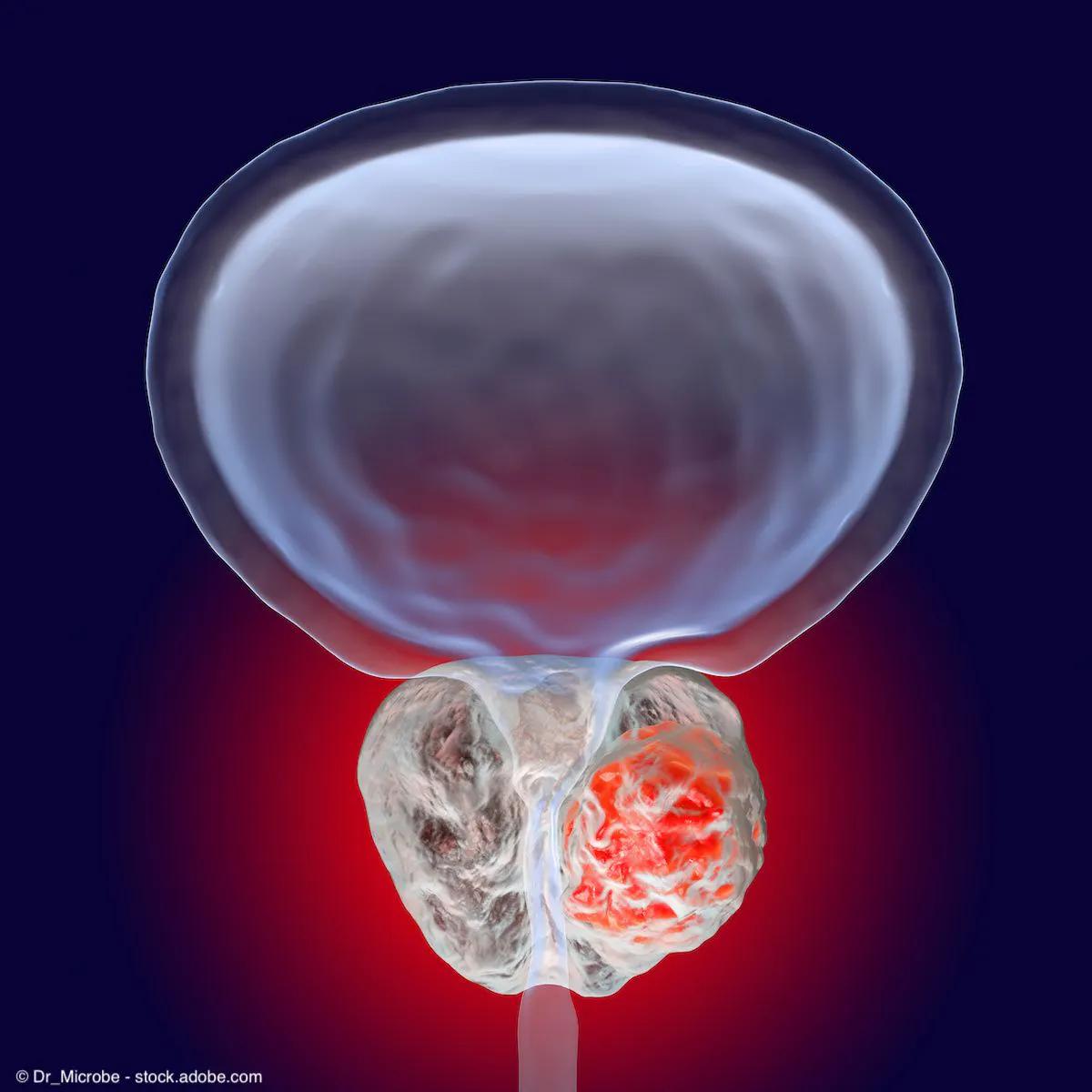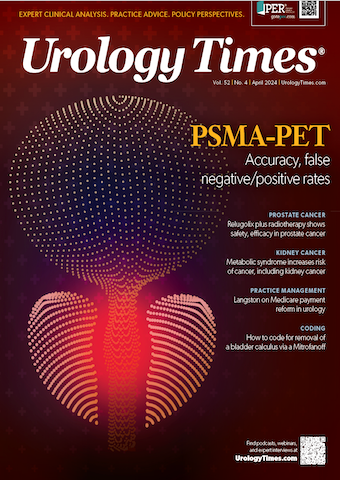News
Article
Urology Times Journal
Relugolix plus radiotherapy shows safety, efficacy in prostate cancer
Author(s):
“Remarkably, relugolix demonstrated a faster return to baseline testosterone levels compared [with] traditional therapies, a crucial aspect for patients' quality of life post-treatment," says Daniel E. Spratt, MD.
Relugolix (Orgovyx) in combination with radiotherapy was found to be safe and efficacious in the treatment of men with localized or advanced prostate cancer, according to a post hoc analysis of 2 randomized clinical trials published in JAMA Oncology.1
The investigators found no statistical difference in castration resistance-free survival between patients who received relugolix compared with patients who received leuprolide.

The 2 studies included in the analysis were the phase 2 C27003 study (NCT02135445), which assessed relugolix vs degarelix in patients with localized and locally advanced prostate cancer who required short-term androgen deprivation therapy (ADT), as well as a subset analysis of the phase 3 HERO study (NCT03085095), which assessed relugolix vs leuprolide acetate injections in patients with locally advanced, recurrent, or metastatic prostate cancer who required longer-term ADT.
In the phase 2 study, patients received neoadjuvant ADT for 12 to 16 weeks before initiating radiotherapy, followed by adjuvant ADT up to 24 weeks. In the phase 3 HERO study, patients received 2 months of ADT before they were able to receive concomitant radiotherapy.
In total, the post hoc analysis included an assessment of 260 patients, 184 of whom received treatment with relugolix in combination with radiotherapy. The primary outcome measure was castration rate, assessed between weeks 5 to 25 for short-term ADT and 5 to 49 for longer-term ADT.
Overall, the studies showed that relugolix achieved castration rates in 95% (95% CI, 87.1%-99.0%) of patients receiving short-term ADT, and 97% (95% CI, 90.6%-99.0%) of patients receiving longer-term ADT. At 12 weeks following short-term ADT, 52% of patients achieved testosterone levels to baseline or more than 280 ng/dL. At 90 days following longer-term ADT, the mean testosterone levels were 310.5 ng/dL among patients who received relugolix, vs 53 ng/dL among patients who received leuprolide, according to a subset analysis of the HERO trial assessing for testosterone recovery.
“Remarkably, relugolix demonstrated a faster return to baseline testosterone levels compared [with] traditional therapies, a crucial aspect for patients' quality of life post-treatment. This rapid recovery could significantly reduce the adverse impacts associated with long-term testosterone suppression, such as cardiovascular risks and bone density reduction”, said lead author Daniel E. Spratt, MD, in a news release on the findings.2 Spratt is the Vincent K. Smith Chair in Radiation Oncology at University Hospitals Seidman Cancer Center in Cleveland, Ohio.
Additional data from the analysis showed no statistical difference in castration resistance-free survival between patients who received relugolix compared with patients who received leuprolide (HR, 0.97; 95% CI, 0.35-2.72; P = .62).
Regarding safety, no new safety signals were observed when relugolix was used in combination with radiotherapy. Adverse events of grade 3 or higher for both short-term and longer-term ADT were uncommon, occurring in less than 5% of patients.
The long-term safety and efficacy of relugolix is also being explored in the prospective OPTYX study (NCT05467176), which is evaluating the real-world practice patterns and outcomes of the therapy in men with prostate cancer.3 Currently, the trial has enrolled over 600 of the 1000 men to be included in the study. Follow-up of patients with occur for 5 years, with primary completion of the study expected in 2028.
In the current post hoc analysis, the authors concluded, “Relugolix has more rapid testosterone recovery compared with degarelix, when used as short-term ADT, or leuprolide acetate, when used as longer-term ADT. The ability for clinicians and patients to reliably control castration for desired durations makes this an optimal treatment option for many patients receiving radiotherapy and ADT.”1
References
1. Spratt DE, George DJ, Shore ND, et al. Efficacy and safety of radiotherapy plus relugolix in men with localized or advanced prostate cancer. JAMA Oncol. 2024:e237279. doi:10.1001/jamaoncol.2023.7279
2. Novel oral hormone therapy shows promising results for prostate cancer treatment with radiation therapy. News release. University Hospitals Cleveland Medical Center. March 13, 2024. Accessed March 14, 2024. https://www.newswise.com/articles/novel-oral-hormone-therapy-shows-promising-results-for-prostate-cancer-treatment-with-radiation-therapy
3. Spratt DE, McKay RR, Dorff TB, et al. A multi-center, prospective, observational study of patients with prostate cancer being treated with relugolix: OPTYX. J Clin Oncol. Published online February 21, 2023. Accessed March 14, 2024. doi:10.1200/JCO.2023.41.6
























